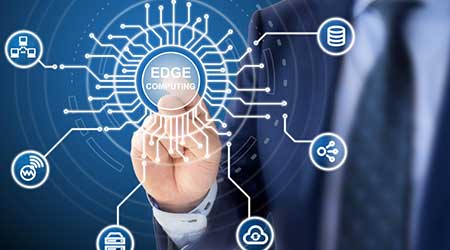Facility Infrastructure Implications for Edge Computing
How the edge computing solution is configured will dictate whether it will require extensive or minimal building infrastructure modifications.
Removing data bottlenecks led to the development of edge computing infrastructure, which processes data closer to where it will be used rather than sending it to a large remote data center.
In 2018, a Business Insider Intelligence report estimated that nearly 2.5 billion IoT devices for enterprises and governmental agencies were connected to edge infrastructure globally, up from 507 million devices in 2015, and growing exponentially to 5.6 billion in 2020. The report claims edge computing is better suited than the cloud for collecting and processing data. Key benefits include:
• Nearly real-time data analysis.
• Lower operations and data management costs.
• Reduced data sent to the cloud, thereby reducing network constrictions.
• Assurance that if an edge device fails, other IT assets will remain operational.
Building infrastructure implications
Early deployments of edge computing are as custom as the companies and governments deploying them. How the edge computing solution is configured will dictate whether it will require extensive or minimal building infrastructure modifications.
Some edge applications are using 5G telecommunications networks. So the edge device might be a cell phone, a tablet, a laptop, or possibly a cell tower.
In manufacturing, edge computing is inside machines on the shop floor. In retail stores, edge computing is happening inside small, specially designed cabinets.
At the data center level are edge solutions like Google’s DeepMind machine learning application, which has reduced data center cooling energy by up to 40 percent. “This translates into millions of dollars of savings per year,” notes Todd Traver, vice president IT optimization and strategy for Uptime Institute, “which is certainly a big incentive for building control systems companies to develop and bring this technology mainstream into packaged facility management applications and operations groups.”
Edge computing is using both new and existing equipment. A number of edge devices, sensors, and machines can be retrofitted. “Edge compute, and the analytic power it provides, enables dumb sensors to become part of a smart solution,” says Traver.
Hardware vendors are coming up with network equipment housed in hardened exteriors. Operationally, these solutions can be miniature standalone data centers or part of larger mission critical applications, depending on the organization’s needs. Facility managers are realizing that edge computing may require the same degree of reliable, redundant design as an enterprise’s main onsite or offsite data center.
Related Topics:














